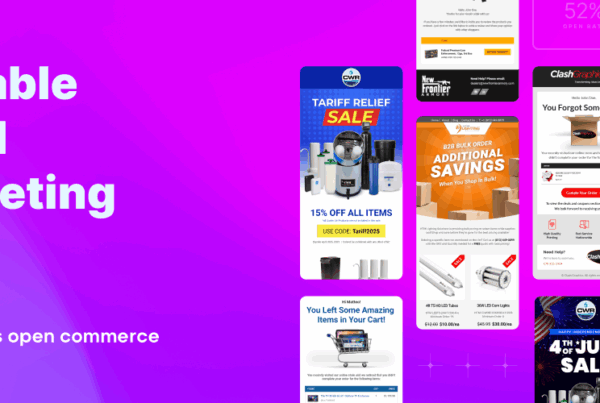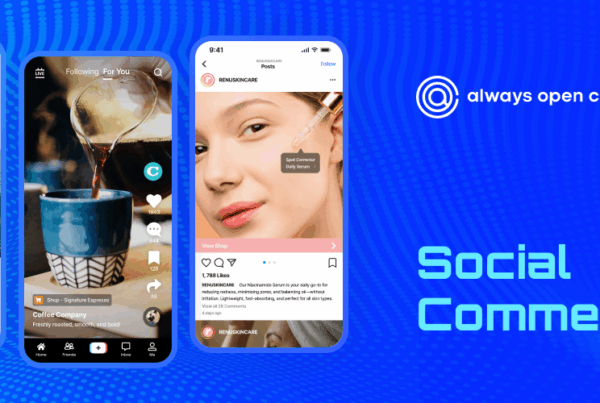Providing a seamless and delightful customer experience leads to a winning e-commerce business. You can create an engaging customer experience that keeps consumers satisfied and returning to your online store. Focus on strategies like personalization, gamification, and automation to offer a unique shopping experience.
We’ll discuss how to use tactics, as well as other ways for creating a positive customer experience. From understanding the different types of customer experiences to implementing effective strategies.
Different Types of Customer Experiences
There are types that you can cater to when it comes to customer experience. Understanding these types can create an engaging and satisfying shopping experience.
1. In-Store Experience: The traditional customer experience where consumers physically visit your store and interact with staff members. A helpful and knowledgeable staff can create a welcoming atmosphere, providing memorable experiences with product demonstrations and interactive displays.
2. Online Experience: With the rise of e-commerce, businesses had to adapt and provide a great online experience for customers. With easy to navigate websites that load quickly, providing clear product information and images, an intuitive checkout process, as well as helpful customer service options.
3. Social Media Experience: Social media is an important tool for businesses when creating relationships. Customers expect businesses to respond to comments on platforms such as Facebook or Twitter, providing helpful resources. Additionally, you can use social media platforms to deliver promotions or discounts to your followers.
4. Mobile Experience: As more people use mobile devices for browsing and online shopping, businesses must have optimized websites for smart gadgets. Websites should be designed to load quickly and easy to navigate on devices, with a secure checkout process.
5. Customer Service Experience: Customers expect businesses to have knowledgeable staff who can assist them with queries, as well as provide helpful information or resources if needed. Additionally, having an efficient and friendly returns policy is important for creating a positive customer experience.
Understanding these customer experiences help identify areas for improvement within your e-commerce business model. Strive for smooth sailing journeys while adding touches of surprise and delight along the way, you’ll create an unforgettable shopping adventure for your valued customers.
Why E-Commerce Customer Experience is Important
Customer experience influences the success or failure of an online business. With options accessible at their fingertips, a seamless and enjoyable shopping experience has become fundamental.
Customer Retention
Customer experience directly impacts customer satisfaction. When customers have a positive experience with an online store, they return and recommend it to others. If they encounter difficulties navigating through a website or face issues during checkout, they may give up and leave.
Build Brand Loyalty
A great customer experience builds brand loyalty. Personalized interactions and exceptional service establish strong connections with customers. This not only encourages repeat purchases but also fosters brand advocacy as satisfied customers are more inclined to share their positive experiences on social media platforms.
Increases Business Reputation
Focusing on customer experience allows e-commerce businesses to gain brand reputability. A quality online shopping experience demonstrates credibility and trustworthy businesses. This leads to increased sales and a stronger reputation in the eyes of consumers.
Competitive Advantage
Competitive advantage can be gained through excellent customer experience. Businesses can set themselves apart from their competition with a unique and enjoyable shopping experience. This boosts brand awareness, higher conversion rates, and a larger customer base, resulting in customer loyalty and more sales.
Prioritizing e-commerce customer experience is paramount for higher sales and building long-term relationships with customers who will continue to support your business.
What are the Components of Customer Experience
There are components that impact a customer’s perception of your brand. These components include:
Customer-Centric Culture
A customer-centric culture focuses on meeting the needs of customers. The company revolves around serving its customers rather than focusing on its interests. It also means employees are trained to treat customers with respect and to be responsive and attentive to requests.
Planned Touchpoints
Well-designed touchpoints are the elements of your website and customer service that visitors see and interact with. These include your homepage, product pages, checkout process, and social media platforms.
Consistent Quality
Customers anticipate quality products and services, and they will return purchases if they are not consistently delivered. Quality should be top priority and monitored throughout the entire process from product design to customer service.
Customer Satisfaction
Customer satisfaction retains customers and builds brand loyalty. It is important to provide a quality product at a fair price, and communication delivers a great customer experience. Customers want prompt responses from companies and need clear information about the products or services they’re considering purchasing.
Focusing on these components can create an environment that fosters loyalty and encourages repeat business from satisfied customers!
What Makes a Good Customer Experience
The best customer experience will vary depending on the specific needs of each business. Factors that can make a positive customer experience include:
1. Product Page Experience: A good product page experience is easy to navigate and organized. The product page includes clear images and descriptions, as well as customer reviews.
2. Seamless Checkout Process: The checkout is straightforward, without asking for additional information.
3. Multiple Payment Options: Offer payment methods, such as credit cards, PayPal, and direct debit for customers to choose the option they are familiar with.
4. Customer Service: Customer service should be available 24/7 with responsive and polite representatives. Always be ready to answer questions that customers have about products or the checkout process.
5. Constant Website Improvement: It increases customer satisfaction when there are regular updates with new content and features relevant to the customer’s interests.
An enhanced customer experience involves an intuitive website design, smooth checkout and payment processes, as well as excellent customer service. Implementing these strategies create an exceptional shopping experience that keeps customers coming back for more.
Enhance Your E-Commerce Customer Experience Now!
Enhancing customer experience is fundamental for e-commerce businesses to thrive and succeed. For further enhancements, invest in technologies such as AI-powered chatbots or virtual assistants that provide instant support to customers. Leverage data analytics to gain insights into consumer behavior and preferences to offer tailored recommendations.
Elevating your e-commerce customer experience builds strong relationships with your target audience. Investing time, money, and effort into enhancing every aspect of your online store will not only lead to increased sales but also foster brand loyalty. Ensuring a seamless, personalized, and enjoyable shopping journey will keep customers coming back for more.
Implement these strategies with the help of our certified developers, creative designers, and white label service – AOC today. Watch your business flourish in this ever-evolving digital landscape!












